As the illustrious marque celebrates 75 years of sports car mastery, it’s time to take a deeper dive into the exciting world of Porsche history.
The legendary German manufacturer is renowned for producing some of the planet’s finest high-performance cars, from the original Type 356 to the iconic 911 and beyond.
In this first entry in our On Your Marques! series, we pay tribute to the eminent brand from Stuttgart and learn how Porsche rose to become one of the biggest names in motoring history.
A brief history of Porsche
Born in 1875, Professor Ferdinand Porsche (which is always pronounced ‘Porsch-AH’) was a gifted automotive engineer from the Czech Republic, who began his career as an apprentice at his father’s plumbing business.
As a teenager, Porsche moved to Vienna to study before joining the luxury coach builder Jacob Lohner at the age of 23. By 1898, he caught the attention of the motoring world when he contributed the engine design to the groundbreaking electric vehicle known as the Egger-Lohner C.2 Phaeton.
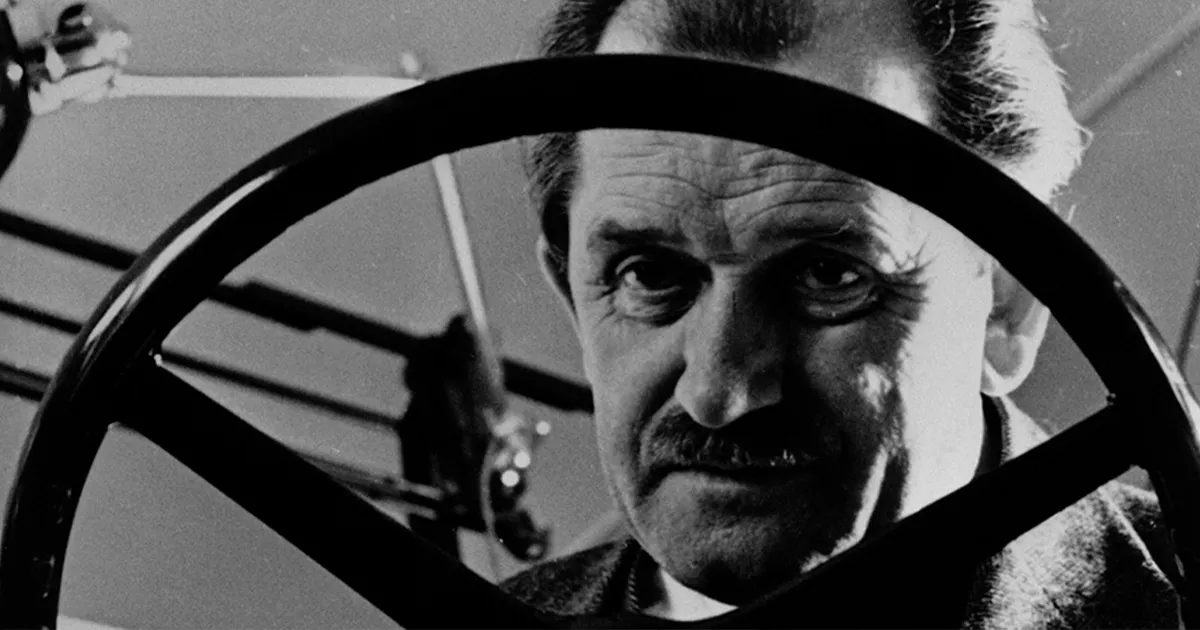
Image: Porsche
Fast forward three decades to August 1930 and Porsche took a consultancy job to manufacture individual components for an innovative hybrid diesel and petrol engine known as a Hesselman. The following year, on 25 April 1931, Porsche company history officially began in Stuttgart, when the professor entered the company in the commercial register.
While the brand didn’t initially build cars under its own name, it was most notably tasked with designing an affordable and reliable German ‘car for the people’ in 1934, after a commission from one Adolf Hitler. This resulted in the world-famous Volkswagen Beetle, which remains one of the most successful car designs of all time.
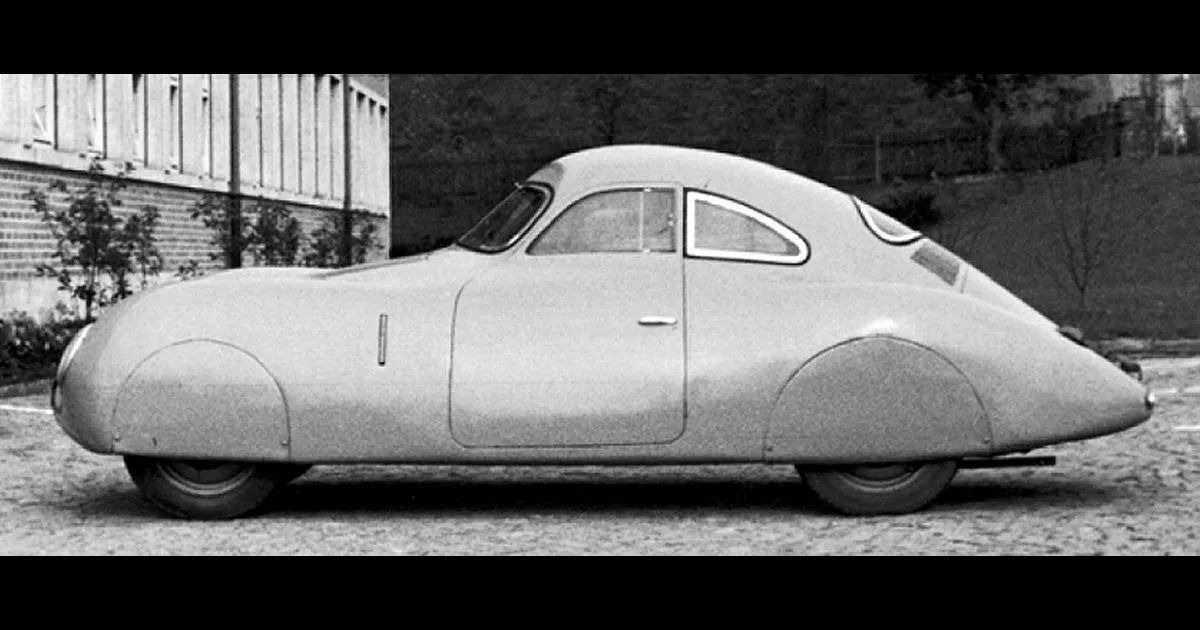
Image: Porsche
In 1939, the first Porsche automobile – the futuristic Porsche 64 – was developed. However, it wasn’t until 1948 when the brand truly broke ground with the Type 356. The 356 certainly had a design reminiscent of the Beetle and used a lot of Volkswagen technology, with enhanced engineering, to reach speeds of up to 135 km/h (83 mph).
By now, Porsche had a taste for developing fast performance cars; perfectly illustrated in 1962 when the Porsche 804 achieved victory at the French Grand Prix, in the marque’s only F1 season to date.
Following its temporary fling with F1, Porsche continued to enjoy racing success, particularly in long-distance events such as the 24 Hours of Le Mans, in which the exemplary 917 gave the marque its first overall win in 1970.
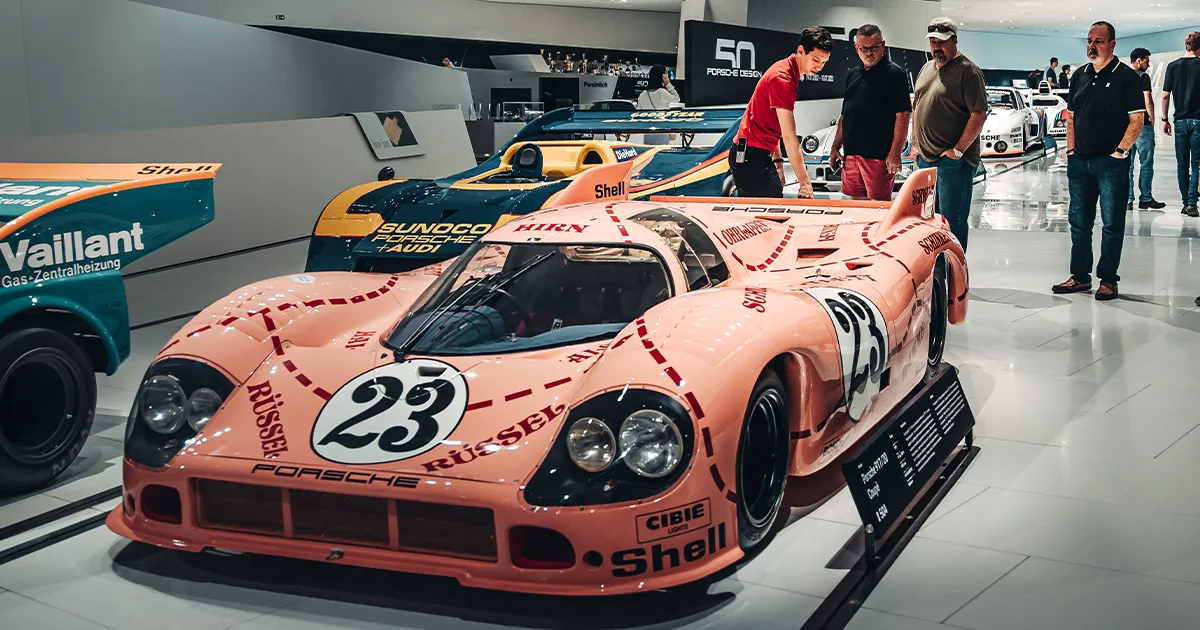
Image: Ultimate Driving Tours
Racing aside and, with the arrival of the production 911 in 1964, Porsche became synonymous with high-quality sports cars built for the everyman.
Over the next few decades, the motoring world saw the release of several now iconic Porsche cars, including the 930 Turbo (1975), the 959 (1986), the Carrera GT (2004), and the 918 Spyder (2013).
Porsche continues to innovate and excite, with the upcoming Mission X concept car giving an incredible glimpse into what the future of sports cars may hold – an all-electric hypercar created with the vision of becoming the fastest road-legal vehicle on the Nürburgring.
Porsche 911: history of a motoring icon
Designed as a larger and more comfortable replacement for the 356, the Porsche 901 made its debut at the 1963 Frankfurt Motor Show. However, due to a dispute with Peugeot – which claimed legal rights to all car names using three figures and a middle zero – the 901 was swiftly changed to 911, and a superstar was born.
The earliest 911s used two-litre rear-mounted air-cooled engines producing just 130HP. But the chassis design was unmistakable. Minimalistic, with a split personality – a distinctive fastback silhouette that created a ‘fat and happy’ front, and an angry, aggressive rear. Today, the 911 is still broadly accepted as being the perfectly proportioned sports car.
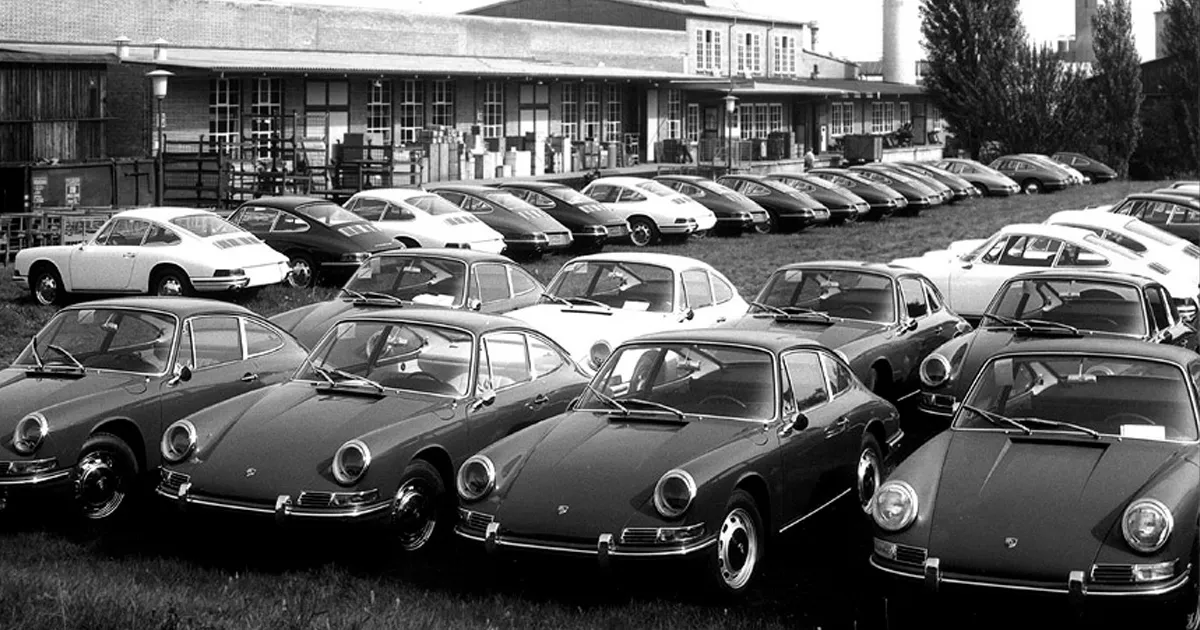
Image: Porsche
Over the past six decades, Porsche has continued to advance and enhance the 911, although the core concept remains the same: it’s the maestro, the perfectionist, the consummate performer.
Today – with more than one million sold – the 911 is a sports car benchmark. It was designed to perform as well on the streets as it did the track and has a well-earned reputation as one of the most accessible sports cars ever produced.
Since its 1963 introduction, the 911 has been a constant at racetracks around the world, from the Monte Carlo Rally to the 24 Hours of Daytona. Yet for all its racing prowess, it is perhaps more the 911’s understated prestige, and reliability and versatility as a road car that make it such a legend.
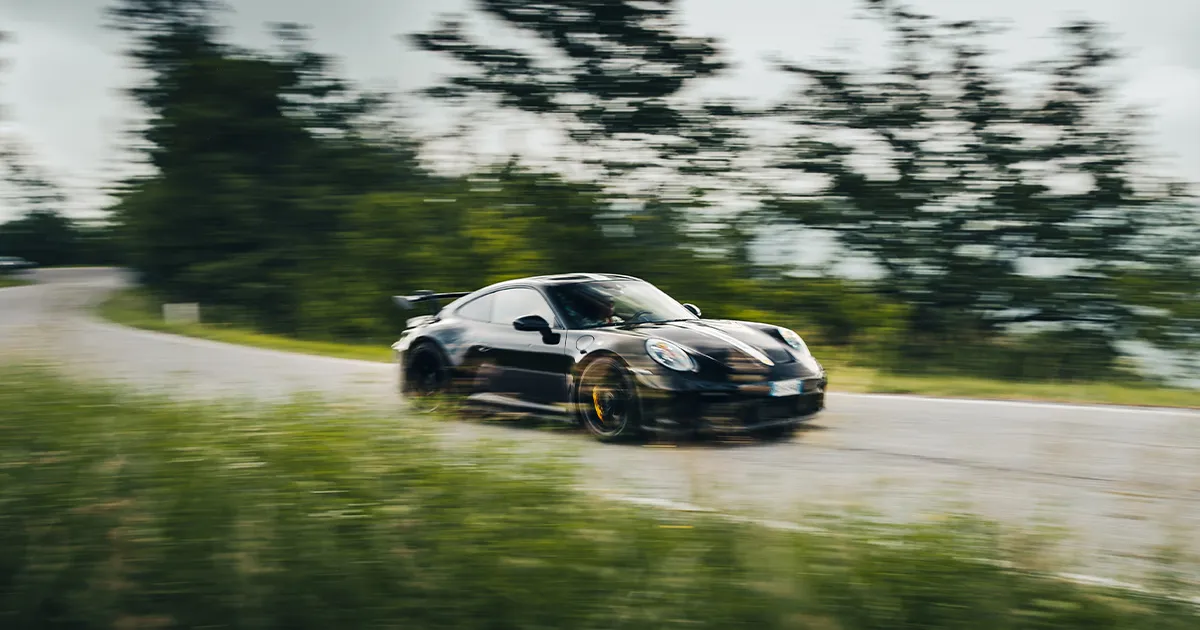
Image: Ultimate Driving Tours
Whether cruising the autobahn in a 911 – which you can enjoy as part of our luxury self-drive tour of Germany – or winding along a stunning mountain pass, there are few greater feelings than being behind the wheel of a 911.
It was Ferry Porsche – son of Ferdinand Porsche Sr. – who famously summed up the flexibility of this unique series:
“The 911 is the only car you could drive on an African safari or at Le Mans, to the theatre or through New York City traffic.”
My take: why the 911 is legendary
Personally, I’ve always regarded Porsche, and specifically the Porsche 911, as the benchmark for sports cars. Porsches have always been drivers’ cars, and have been built with the driver in mind. This is why they are iconic and this is why you cannot be regarded as a true car enthusiast until you have owned at least one Porsche.
Notable designs and variants
Over the years, the world has enjoyed many generations of the 911, including the first true adaptation: the G-series, arriving in 1975. The most exciting G-series was the now iconic 911 Turbo, which boasted a new look, a mighty 260HP engine, and a top speed of 250 km/h (155 mph).
In 1989, the 964 series was introduced, giving the 911 a refined design and tons of fresh tech under the hood. The newly introduced Carrera 4 added four-wheel drive, power steering and ABS brakes, and even airbags.
By 1994, the world was ready for the 993 series, which was the 911’s final air-cooled generation. This was the generation of the wild and wonderful GT2, with a lighter chassis and explosive 3.6-liter twin-turbo engine. With less than 200 produced, the GT2 remains one of the most sought-after 911s in history.
The eventual appearance of the 996 generation in 1997 ruffled a few feathers among the Porsche cognoscenti. The era of air cooling was over, and the new model’s water-cooled engine and striking similarities to the cheaper Boxster caused some disgruntlement. However, a major plus of this generation was the arrival of another legend in the stripped-out, track-ready GT3.
More recently, the 992 series continued the 911 philosophy of ‘evolution not revolution’. After all, why fix something that’s already perfect? While much the same as the previous 991 generation (2011 to 2019), there are some notable differences including a wider rear, sharper edges, minimalist interiors, and a long light bar at the rear.
Today, Porsche continues to evolve its icon, which will include adding hybrid power to future models — one of the biggest changes in 911 history.
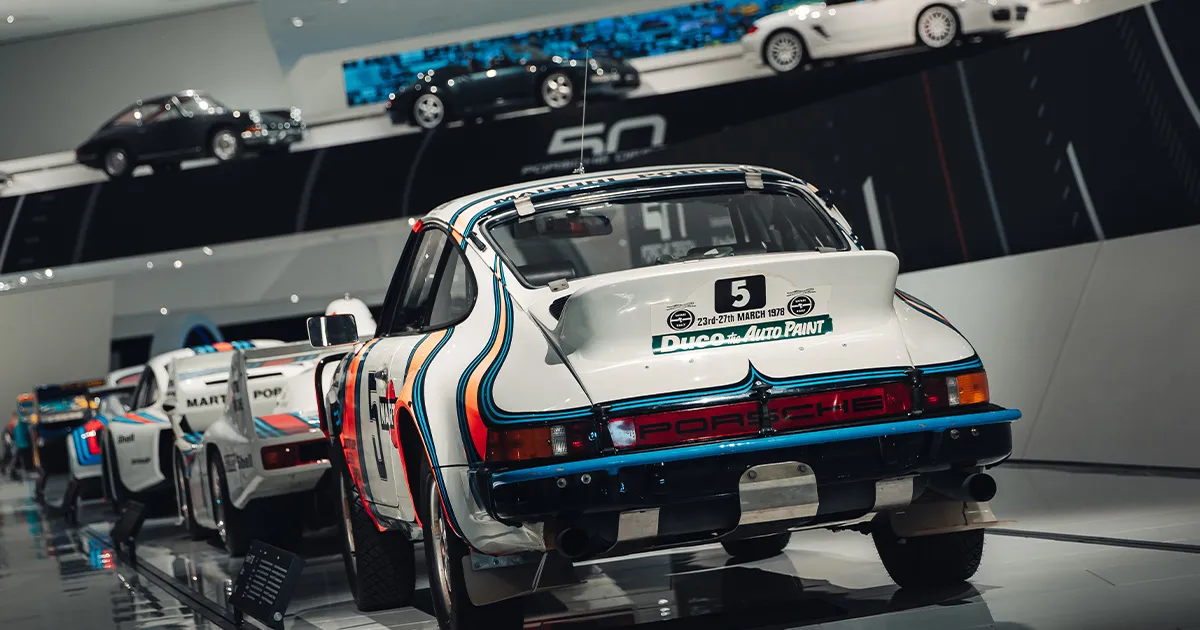
Image: Ultimate Driving Tours
The design, philosophy and brand values of Porsche
While Porsche is always progressing and innovating, the brand rarely chooses to deviate from what makes its cars so beloved.
As Porsche CEO Oliver Blume once said, “In principle, the Porsche 911 is always the same sports car despite our uncompromising commitment to progress. Our company works in exactly the same way.”
Porsche’s design and philosophy centre around its heritage – there is a fanatical desire to preserve the strong brand identity that all Porsche cars bear.
Every Porsche is designed to be instantly identifiable as a Porsche, while maintaining subtle distinctions. This means a 911 is easy to distinguish from a Cayman or a Boxster, but all are easily identified as Porsches.
One brand-identity cue is that all Porsches are united by an air intake at the front instead of the typical radiator grille. Porsche ensures that this is the case on every one of their cars, even its heftier models, such as the Panamera sedan and the Cayenne SUV – such is the brand’s commitment to upholding its identity.
However, each car must also maintain its own individuality. For example in the distinctive headlamp contours, which are a Porsche signature. Every car has its own unique headlamp contours to give it instant recognisability.
Porsche motto
Over the decades, Porsche has had many mottos and slogans, although the most impactful and memorable must be ‘There Is No Substitute’ (which came well before Tom Cruise uttered it in the 1983 film, Risky Business).
This simple slogan says everything you need to know about Porsche, and remains true today.
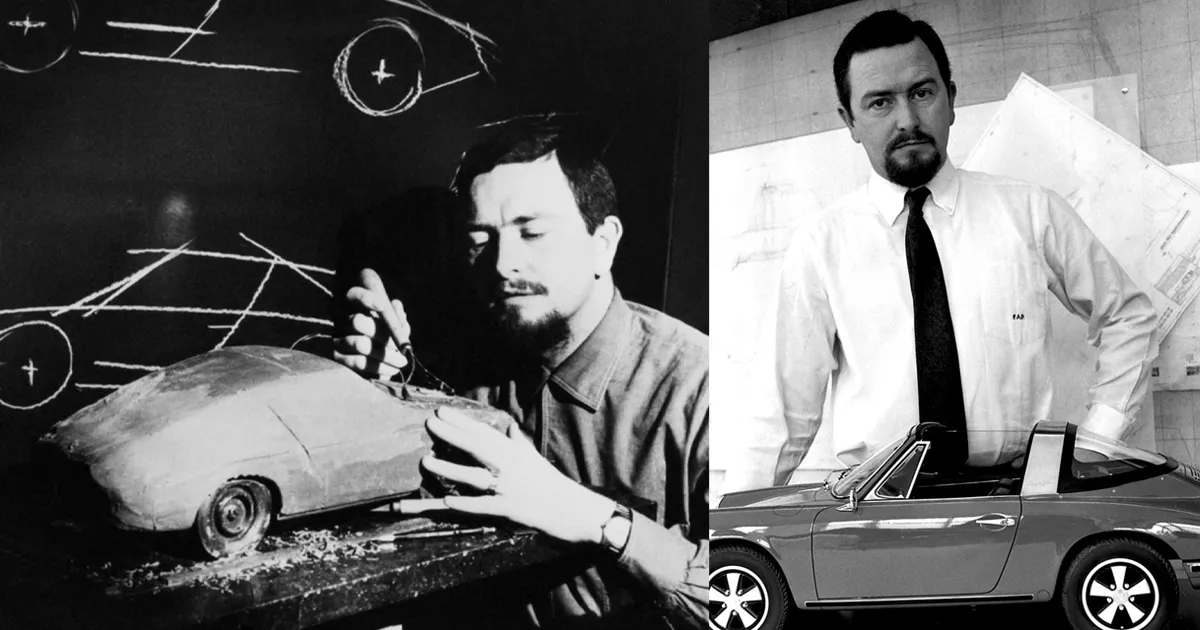
Image: Porsche Design
Porsche Design
In 1972, Ferdinand Alexander Porsche – grandson of Porsche’s founder – established a subsidiary of the company, known as Porsche Design.
An exclusive lifestyle brand, Porsche Design extended the legacy of Porsche by bringing its philosophy to everyday items, such as glasses, pipes and stationery.
The debut product from Porsche Design was the P'6510 watch in 1972, which was the world’s first blacked-out chronograph – a timepiece that is as highly desired today as it was in the seventies.
Now operating from Zell am See in Austria, the design branch produces everything from Bluetooth sports headphones to 911-inspired eBikes, and has won multiple awards for the form and function of its products.
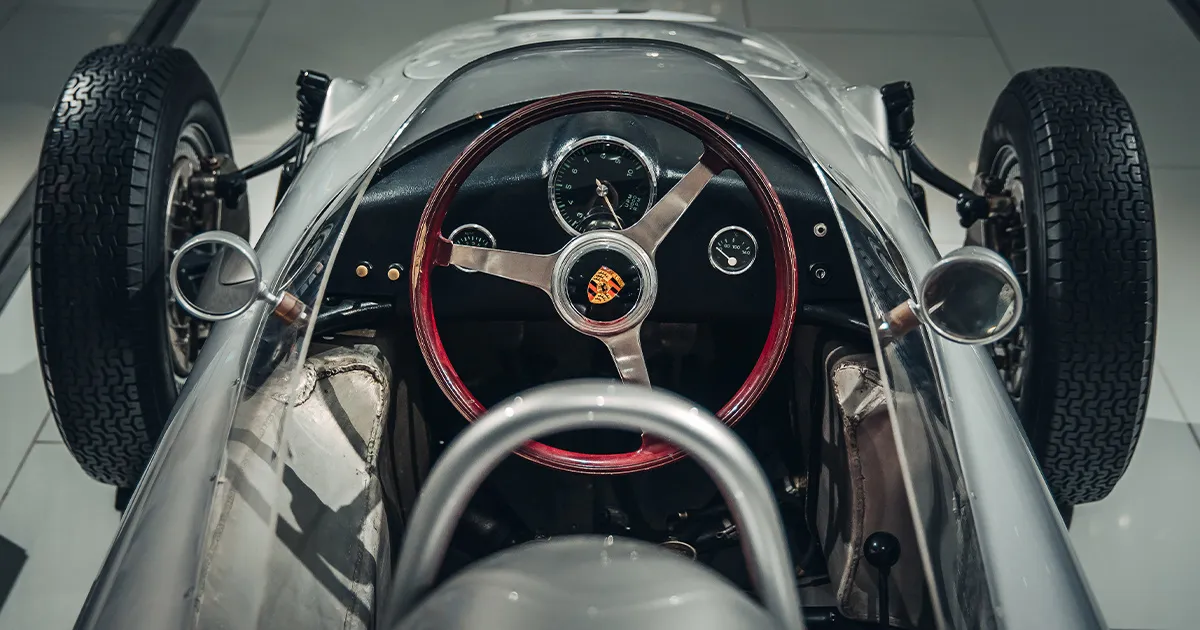
Image: Ultimate Driving Tours
What makes Porsche unique? What are its brand associations
Porsche’s cars are easily identified thanks to the marque’s commitment to a consistent and unique brand identity – one of the strongest in motoring, and it sets itself apart from many other sports car manufacturers which have dabbled with gimmicks – Porsche chooses instead to let its engineering do the talking.
Another brand association that separates Porsche is that it goes the extra mile to cater for its customers.
This is illustrated with Porsche Exclusive Manufaktur, which gives customers the ability to build a Porsche that is entirely unique to them – from the wheels and interior leather, to bespoke paint jobs, tinted headlights, and choice of steering wheel construction. Like snowflakes, no two Porsches emerging from Exclusive Manufaktur are identical. Indeed, there is nothing quite like receiving a brand-new Porsche made specifically for you.
The marque is also considered one of the greatest racing manufacturers in history, with more than 30,000 victories to its name. Porsche is prominent in many branches of motorsport, particularly in long-distance races such as 24 Hours of Le Mans. In fact, with 19 overall wins, Porsche currently holds the record for the most race victories at Le Mans.
My take: Porsche as a brand
To me, the Porsche brand is synonymous with quality, reliability, and above all, performance. Every Porsche is built to this ethos, from the least to most expensive. This is what makes the brand special and unique.
Porsche stereotypes
Every car marque has its positive and negative stereotypes, and Porsche is no different.
One of these is that all Porsches look the same, which may be an unwanted byproduct of the company’s dedication to consistency. But while the Porsche DNA is indeed strong, and you can see the 356 in the 911 and the Cayman, we know that this is no accident – they are designed to share a common thread that has been running for more than 75 years.
Another unfair stereotype is that Porsche is a ‘poor man’s Ferrari’ – yet anybody who has ever owned or experienced a Porsche will know that this couldn’t be further from the truth. Many Porsche models will stand toe-to-toe with Ferraris in terms of luxury, feel and power. Just consider that the Porsche 911 GT2 RS set one of the fastest ever production car records around the Nürburgring, with a jaw-dropping time of 6:43.300. Ferrari, over to you.
However, the majority of Porsche stereotypes fall on Porsche owners themselves. There is a sense that owning a Porsche may make one proud, perhaps even precious. But let’s face it – if you own a Porsche, why wouldn’t you be proud?!
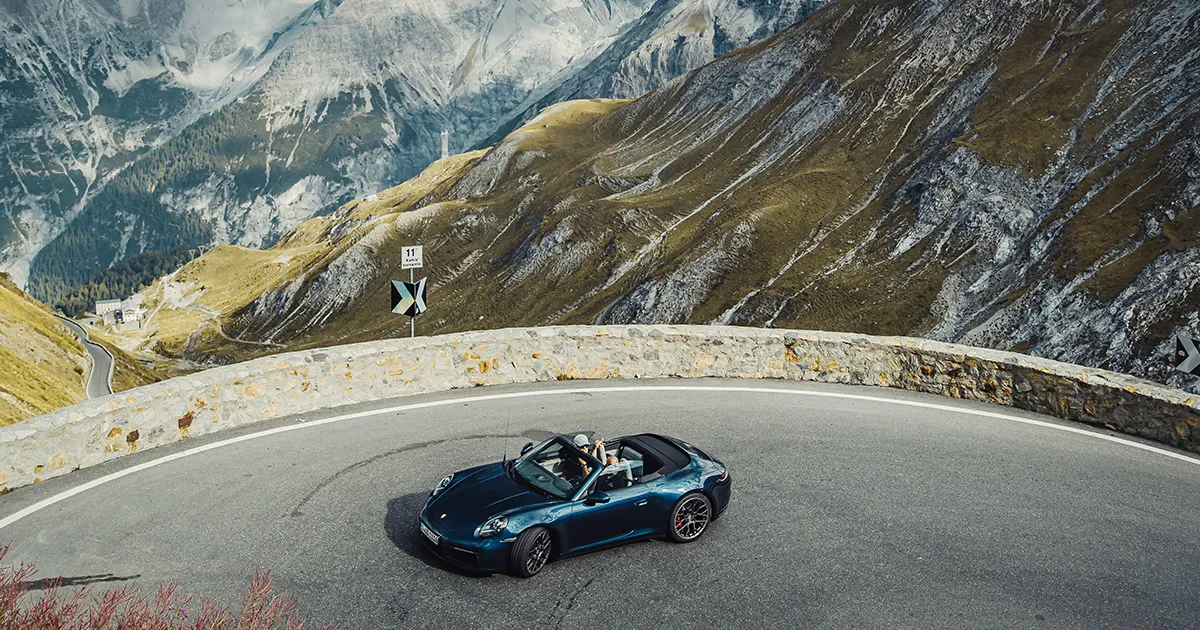
Image: Ultimate Driving Tours
On Your Marques … get set … GO! Experience Porsche with Ultimate Driving Tours
Porsche remains one of the greatest marques in history, known for its innovation, attention to detail and strong core values. Whether it’s a sizzling hot 911 GT3 or a family-friendly Cayenne, driving a Porsche is always a distinctive and exclusive experience.
And if you want to do more than just dream about driving a Porsche, you can get behind the wheel of the incredible Porsche 911 GT3/GT3 RS and conquer some of Europe’s finest roads on our luxury luxury driving tour of Europe — celebrating in style at the Monaco Grand Prix along the way.
To learn more about this bucket-list event, reach out to our friendly team today.
Share Article
